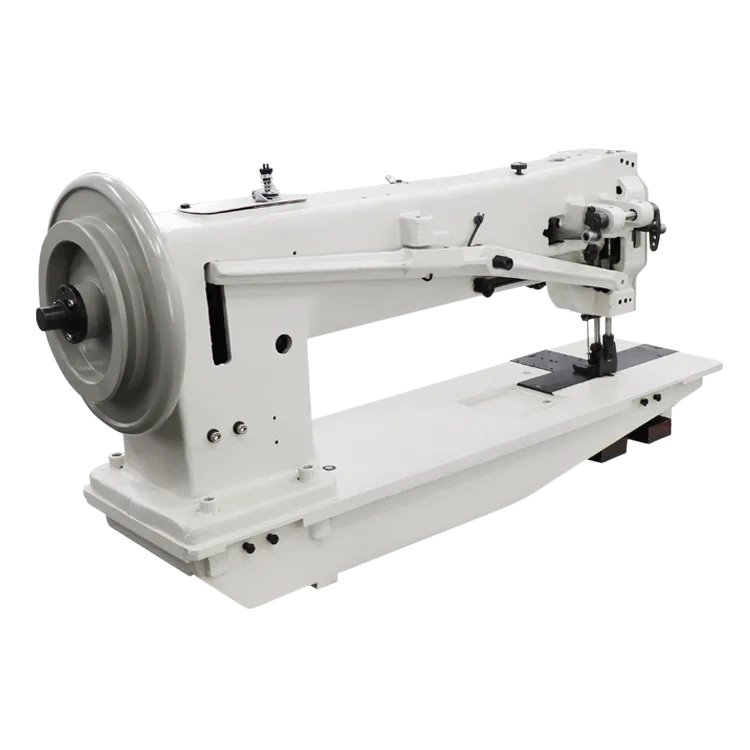Versatile Industrial Sewing Machine for Straight and Zigzag Stitching Solutions
Understanding Industrial Sewing Machines Straight and Zigzag Stitches
Industrial sewing machines are essential tools in the textile and garment manufacturing industries. They come in various types designed for specific tasks, and among them, the straight and zigzag stitch machines are the most commonly used. These machines are integral in producing high-quality garments, upholstery, and other fabric-based goods. Understanding their functionality and applications can greatly enhance productivity and craftsmanship in any sewing operation.
The Straight Stitch Machine
The straight stitch machine is the most fundamental type of sewing machine, primarily used for sewing long, straight seams. It operates with a single needle that creates a straight line of stitches. This machine is widely regarded for its speed and efficiency, making it ideal for high-volume production environments.
One of the key features of straight stitch machines is their ability to handle various types of fabric, from lightweight silks to heavy denim. They are equipped with adjustable stitch lengths, allowing operators to customize the length based on the fabric type and the desired finish. For instance, a longer stitch may be used for basting, while a shorter stitch is preferred for permanent seams.
The straight stitch is particularly common in the construction of garments such as shirts, pants, and dresses. It provides sturdy and durable seams, which are crucial for the longevity of the clothing. Additionally, modifications to the machine can include walking feet or differential feeds, enabling the user to sew even tricky materials like knits and multiple layers without puckering.
The Zigzag Stitch Machine
In contrast, the zigzag stitch machine offers versatility that extends beyond simple straight stitching. This type of machine is designed to create zigzag patterns, which can be adjusted in width and length. The zigzag stitch not only serves aesthetic purposes, providing decorative touches, but also functional ones, enabling stretch in seams—an essential feature for knit fabrics.
industrial sewing machine straight and zig zag

Zigzag stitches are often used for finishing edges, preventing fraying and enhancing the durability of the garment. This is particularly important in fabric types that unravel easily. Moreover, the ability to sew in zigzag patterns allows for more creative design options, such as appliqué work and decorative stitching, which add unique flair to various projects.
In terms of functionality, many zigzag machines come with multiple stitch settings, allowing users to switch between different patterns seamlessly. This feature is advantageous for businesses looking to innovate and diversify their product offerings with minimal downtime.
Applications in the Industry
In the industrial sector, both straight and zigzag stitch machines play critical roles. For example, in the apparel industry, straight stitch machines are typically used in the assembly line to construct basic clothing items quickly and efficiently. Meanwhile, zigzag stitch machines are utilized for hemming, embellishing, and adding stretch—tasks that require a more delicate touch.
Moreover, these two machines can complement each other in production workflows. A typical sewing operation might start with a straight stitch for the main construction and follow up with a zigzag stitch for finishing edges. This combination not only enhances the quality of the final product but also streamlines the manufacturing process.
Conclusion
In conclusion, the straight and zigzag stitch industrial sewing machines are indispensable assets in the sewing world. While the straight stitch machine excels in speed and basic seam construction, the zigzag machine offers versatility and aesthetic appeal. Together, they perform complementary functions that enable efficient and high-quality garment production. Understanding how to leverage these machines effectively can lead to improved productivity, greater creativity, and ultimately, a competitive edge in the textile market. For anyone involved in the sewing industry, mastering these machines is not just beneficial; it's essential for success.
-
Industrial Cylinder Arm Sewing Machine: Revolutionizing Heavy-Duty SewingNewsJul.28,2025
-
Cylinder Arm Sewing Machine: Perfect for Special Sewing ApplicationsNewsJul.28,2025
-
Cylinder Bed Sewing Machine: Essential for Sewing Complex MaterialsNewsJul.28,2025
-
Heavy Duty Sewing Machine: The Essential Tool for Industrial ApplicationsNewsJul.28,2025
-
Computerized Pattern Sewing Machine: Revolutionizing Precision StitchingNewsJul.28,2025
-
Heavy Duty Industrial Sewing Machine: Power Meets PrecisionNewsJul.28,2025
-
Leather Sewing Machine: The Industrial Standard for Tough MaterialsNewsJul.18,2025





























